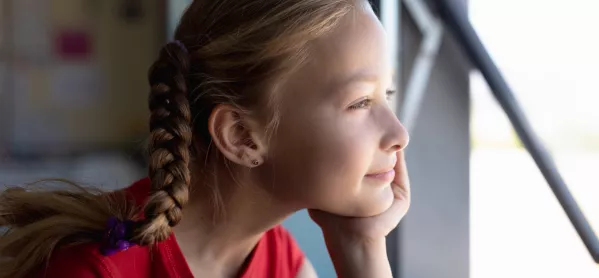Why isn’t government helping schools with ventilation?

As I’m someone who often writes about schools and education, it’s fair to say that there are a number of subjects that tend to feature pretty regularly for me: Sats, Ofsted, the Department for Education, performance tables. All of these are topics I have revisited repeatedly in recent years.
However, this is a first for me…
I can safely say that, 18 months ago, never in my wildest dreams (or indeed nightmares) would I have anticipated writing a blog on the topic of ventilation.
Sure, like any other teacher, I have had to endure the questionable aromas of a Year 6 classroom post-indoor-PE, but never did it dawn on me that the flow of air around a room would become a topic of such importance - certainly not one that I would feel the need to write 800-odd words about.
In the space of those 18 months, good classroom ventilation has gone from being a nice-to-have to being a core part of the government’s Covid safety response for schools - something every school leader in the land has been told should feature in their list of actions to combat the spread of this virus.
Covid in schools: The importance of good ventilation
Despite some early debate, there now appears to be a strong scientific consensus that Covid is airborne. The World Health Organisation states: “The virus can also spread in poorly ventilated and/or crowded indoor settings, where people tend to spend longer periods of time.” (This is almost the perfect description of pretty much every school I have ever worked in.)
Because of this, good ventilation is now seen as key to preventing the spread of Covid. The UK government’s own advice states: “Ventilation is the process of replacing this shared air with fresh air from the outside. The more ventilated an area is, the more fresh air there is to breathe, and the less likely a person is to inhale infectious particles.”
When the government announced last week that it was stripping back protective measures in schools as part of “step 4” of its Covid recovery roadmap, ventilation - along with hand hygiene and advanced cleaning regimes - was effectively all that was left in place.
Given that, schools surely deserve better than the few vague paragraphs on the subject contained in the latest DfE guidance.
It is simply not acceptable for government to highlight the importance of ventilation and then just hand the rest over to schools. If you’ll pardon the pun, this smacks of a government trying to wash its hands of actual responsibility for making our schools safe.
If fresh air is as important as it appears to be, the very least the government should be doing is coordinating a national effort to ascertain the quality of ventilation across the current school estate. My working assumption is that the government currently has no idea how well-ventilated schools are.
Following that, schools should be prioritised according to need, with support and funds allocated to those schools that need urgent work to improve ventilation. The reality at the moment is that, as a result of years of funding cuts, far too many schools have aging and dilapidated buildings, where even fully opening all windows can be a challenge.
Government should be supporting schools
The education authority in New York appears to be taking a really proactive approach to this challenge. A quick look at its website allows you to check the ventilation report for every school, and it reassures parents that: “Any room that does not meet our stringent safety standards will not be used for instructional purposes unless it is repaired or remediated.”
Meanwhile, in England, our guidance talks about a small-scale trial involving some carbon-dioxide monitors, which may or may not lead to some further action at some point in the future...possibly.
I do not underestimate the scale of the task, and I’m sure it would require coordination across local authorities, too. But isn’t that the job of government? Particularly in an emergency situation such as this.
There may be some who argue that this would be an overreaction to a situation that they hope will soon start to improve of its own accord.
Putting aside the rather obvious argument that Covid does not appear to have received the memo that it needs to hurry up and start fizzling out, there is also a strong argument for improving ventilation in schools even in a post-Covid world.
I recall a recent conversation with a public health official who told me that you can tell when ventilation in a room is poor because “children start to get a bit dozy”. Based on that conversation, I can’t help but think there might just be some educational - and perhaps even health - benefits to children being taught in well-ventilated spaces.
The bottom line is that just issuing guidance is not enough. The government could and should play a far more active role in supporting schools to implement the safety measures it is recommending.
Given that it has removed the majority of the measures that were in place, the least it can do is to take seriously the ones that remain.
James Bowen is director of policy at the NAHT school leaders’ union and director of the NAHT Edge union for middle leaders
You need a Tes subscription to read this article
Subscribe now to read this article and get other subscriber-only content:
- Unlimited access to all Tes magazine content
- Exclusive subscriber-only stories
- Award-winning email newsletters
Already a subscriber? Log in
You need a subscription to read this article
Subscribe now to read this article and get other subscriber-only content, including:
- Unlimited access to all Tes magazine content
- Exclusive subscriber-only stories
- Award-winning email newsletters
topics in this article



